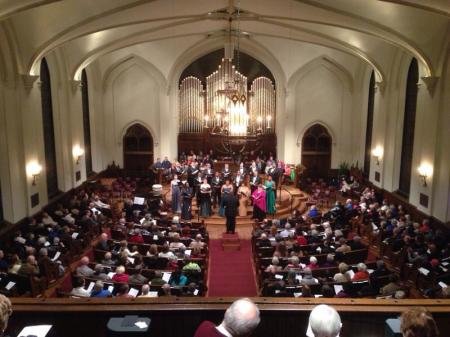Kentucky church votes not to resume indoor services until 70% of city is vaccinated

Leaders at First Presbyterian Church in Lexington, Kentucky, voted Monday to keep indoor worship services suspended until 70% of the city is vaccinated as a more highly transmissible coronavirus variant spreads rapidly around the U.S.
Linda Kurtz, the church’s associate pastor of Christian formation, made the announcement Monday night in a statement on Twitter.
“Tonight, my church leaders decided to not resume in-person worship until 70% of our city has been vaccinated. Also tonight, my spouses’s church leaders are bullying him into resuming in-person worship ASAP. Our incidence rates remain sky-high. I’m worried for our safety,” Kurtz said.
As of 8 a.m. Tuesday, Lexington had registered 30,569 cases of COVID-19, including 211 deaths, according to the Lexington Fayette County Health Department.
When asked why the church would set such a high threshold for vaccinations to resume in-person services, Kurtz noted that the church consulted the reentry guide from the Wisconsin Council of Churches, along with advice from a member of its own reentry team, who is a former public health commissioner for Kentucky. She also noted that 70-75% vaccination is widely considered to be the threshold for herd immunity.
The Wisconsin Council of Churches is a network of Christian churches and faith-based organizations committed to working together across differences. Their reentry guide warns against indoor worship when the vaccination rate against COVID-19 in any area is less than 50%.
“First, watch vaccination rates. When more than 50% of the population has been vaccinated, we can expect that it will begin to have an impact on viral transmission (although ‘herd immunity’ will not likely be fully reached until vaccination rates exceed 75%),” the group notes. “Our safer threshold for gathering is when cases are less than 5 per 100,000 population and positive tests less than 10%. Safest would be even lower.”
Pointing to Wisconsin’s 1.7% vaccination rate earlier this month, the group stressed that indoor worship was unsafe at this time, particularly in light of “the new, more highly transmissible COVID variant which is now circulating in the US.”
A report, posted Sunday on the preprint server MedRxiv, which hasn’t yet been peer-reviewed or published in a journal, said the coronavirus variant that shut down much of the United Kingdom, known as SARS-CoV-2, B.1.1.7, was now spreading rapidly through the U.S.
The CDC predicted last month that the more highly transmissible coronavirus variant would become the predominant strain in the U.S. by March.
“Multiple lines of evidence indicate that B.1.1.7 is more efficiently transmitted than are other SARS-CoV-2 variants. The modeled trajectory of this variant in the U.S. exhibits rapid growth in early 2021, becoming the predominant variant in March. Increased SARS-CoV-2 transmission might threaten strained health care resources, require extended and more rigorous implementation of public health strategies, and increase the percentage of population immunity required for pandemic control,” the CDC said. “Taking measures to reduce transmission now can lessen the potential impact of B.1.1.7 and allow critical time to increase vaccination coverage.”
The WCC urged churchgoers to get vaccinated and gather safely when they are able to do so again and prepare to take steps to stem the spread of the coronavirus for “a significant amount of time.”
“Some of the most important things churches can be doing until it is safer to gather in person is to encourage people to be vaccinated, debunk myths about vaccinations and vaccines, and encourage continued protective behaviors,” the group said. “When you begin gathering in physical space again, plan on event modifications, mitigations and protective behaviors until COVID in the community is very low. Expect these modifications to continue for a significant amount of time, perhaps this calendar year or longer.”





















